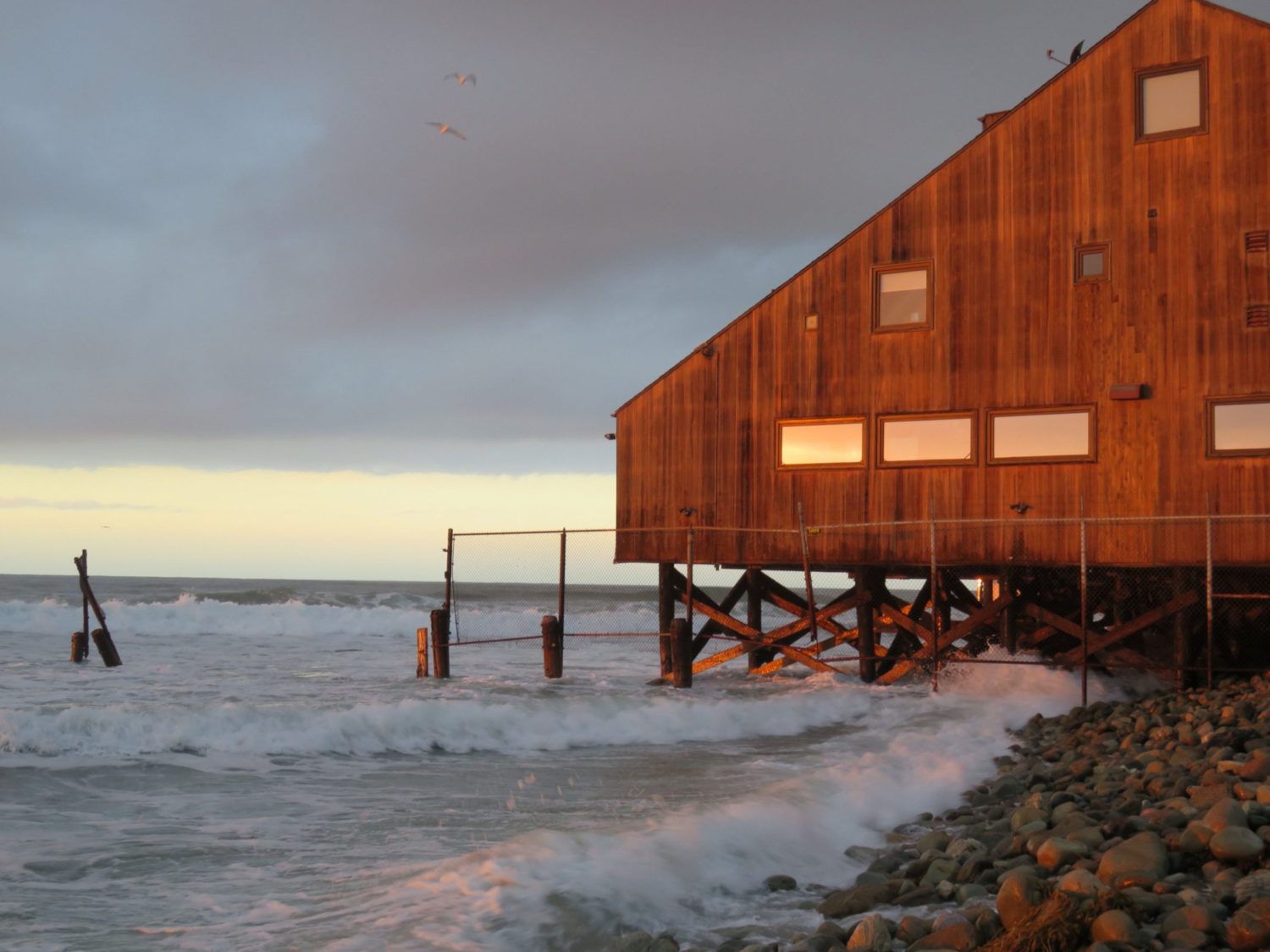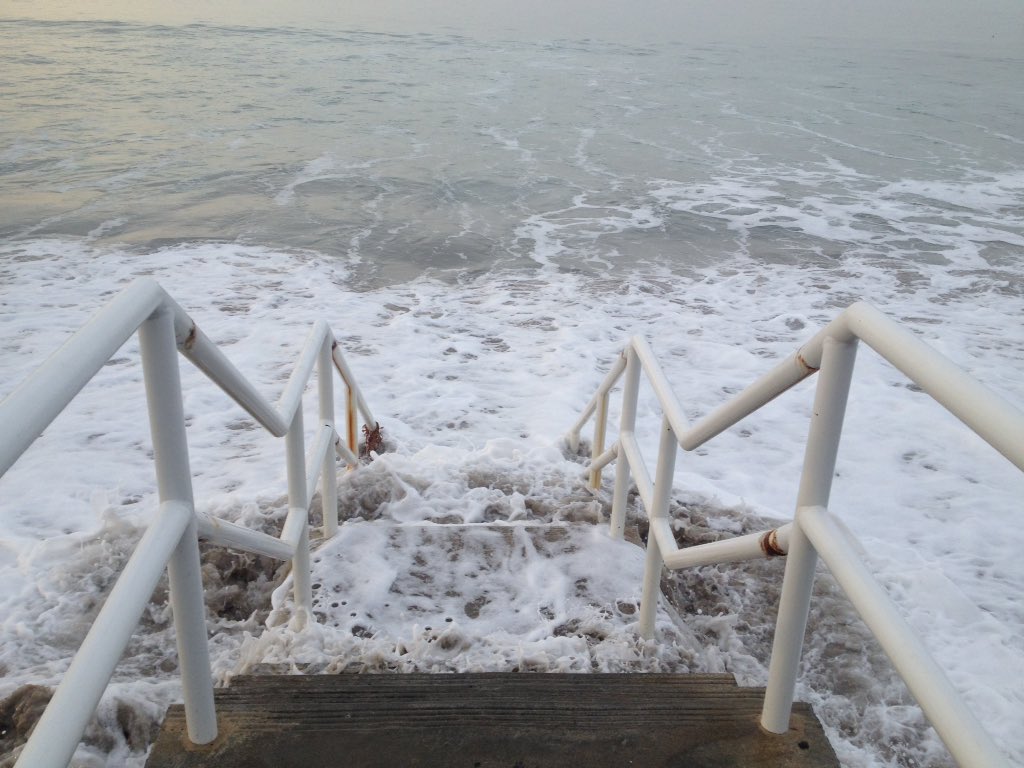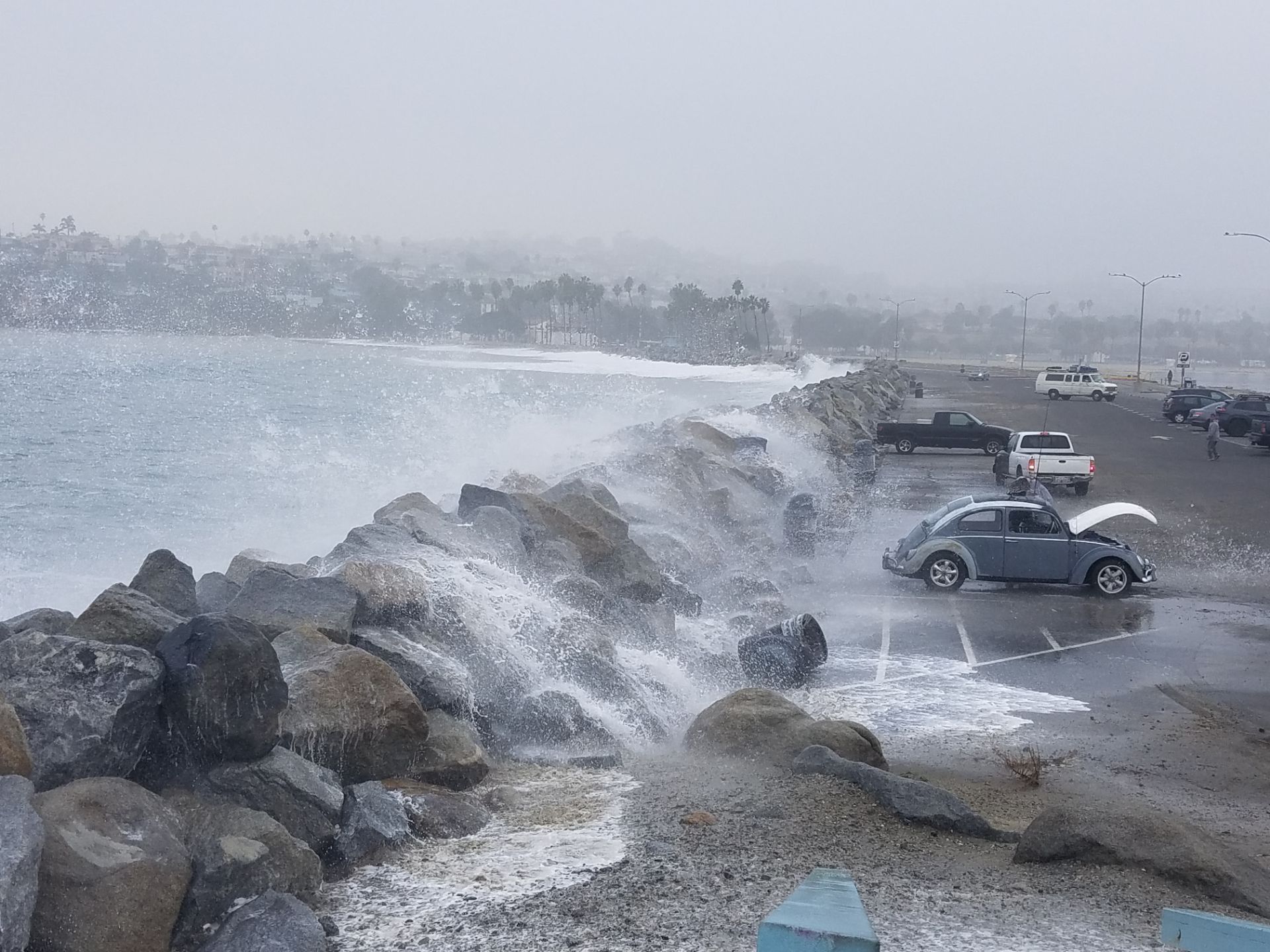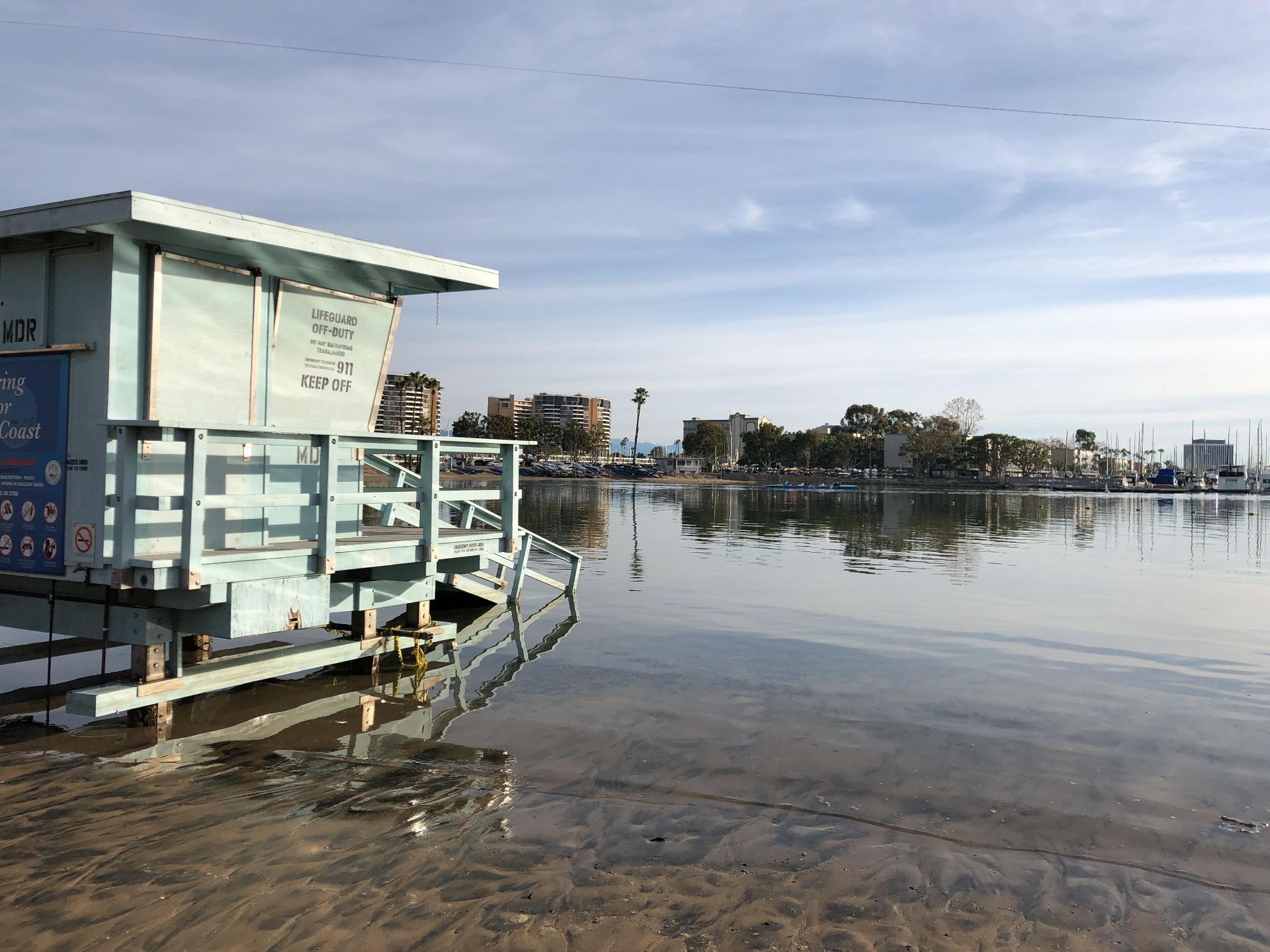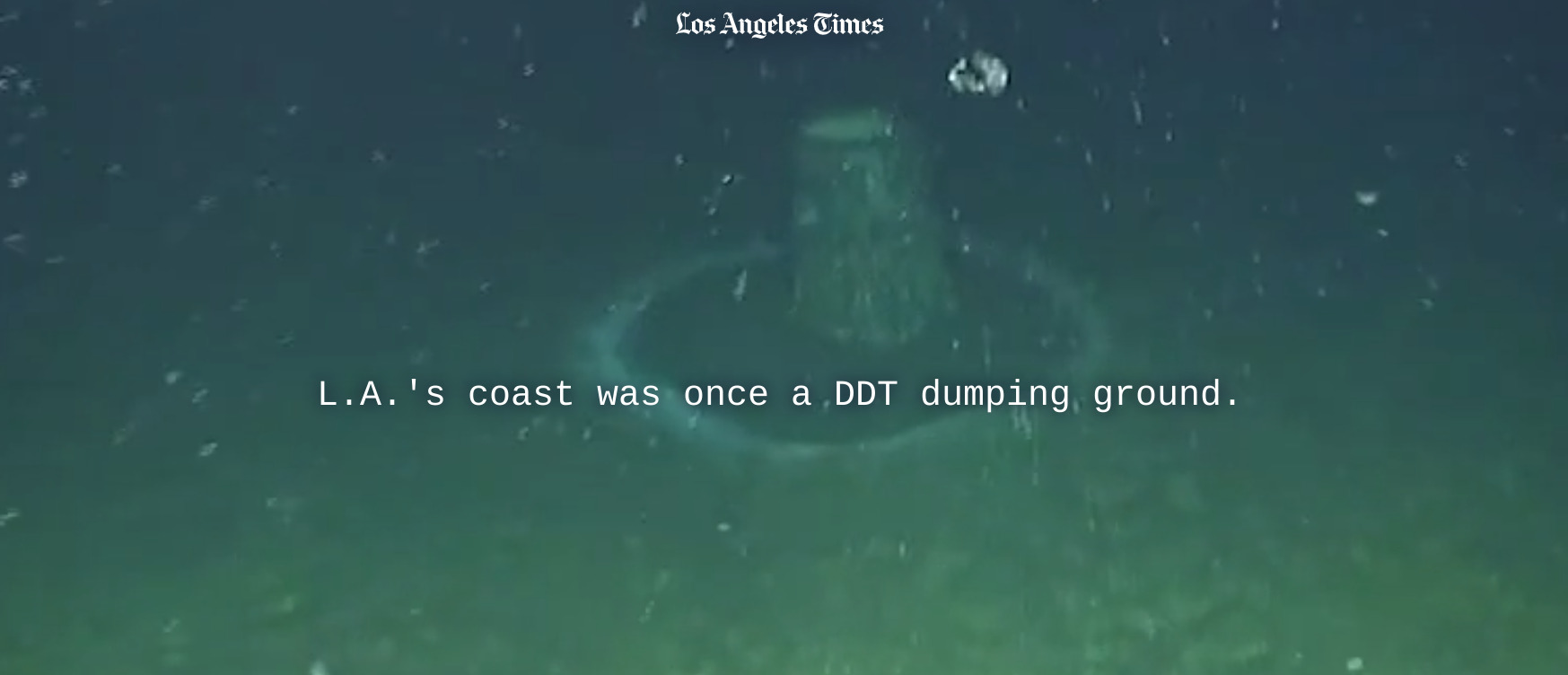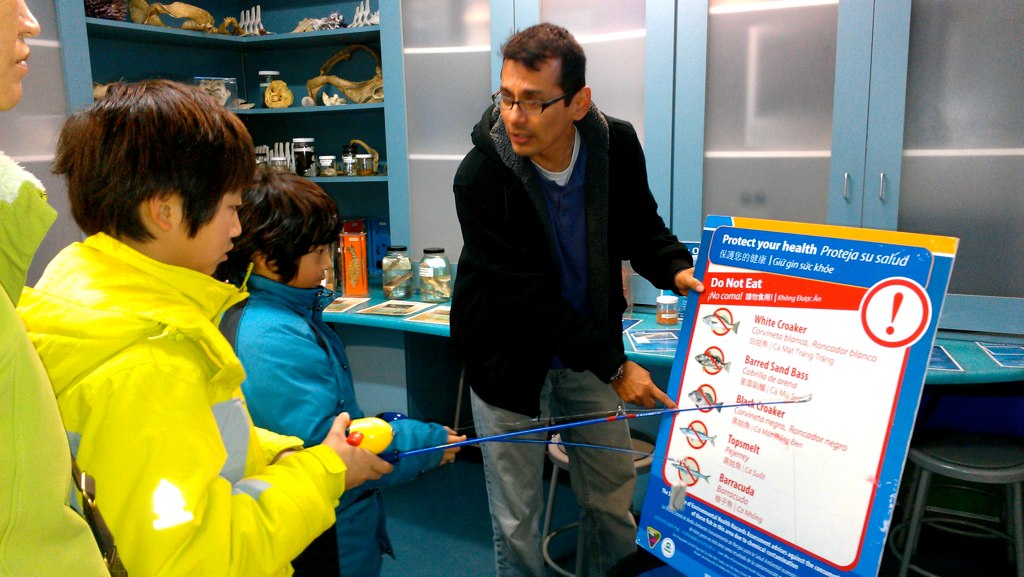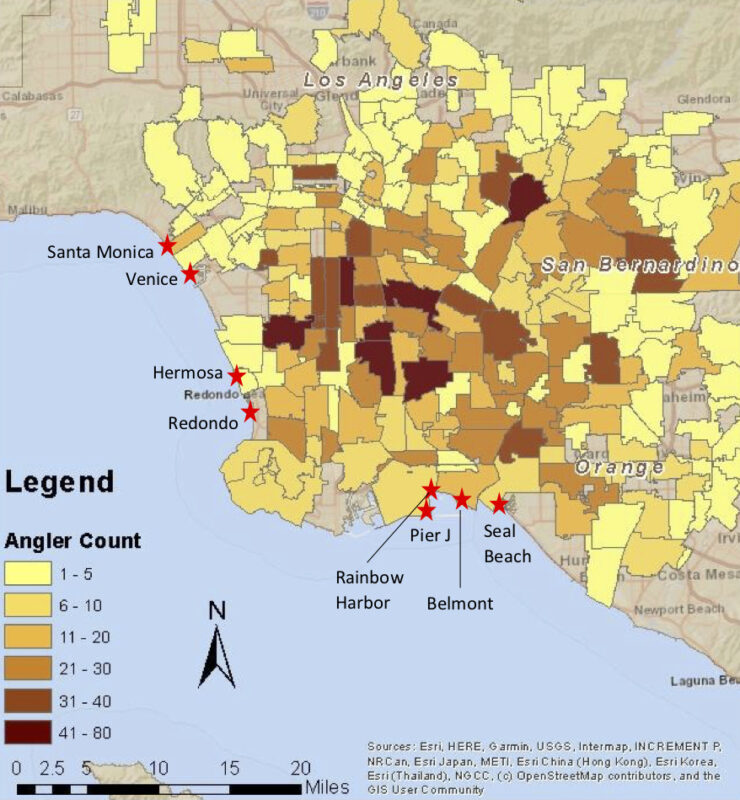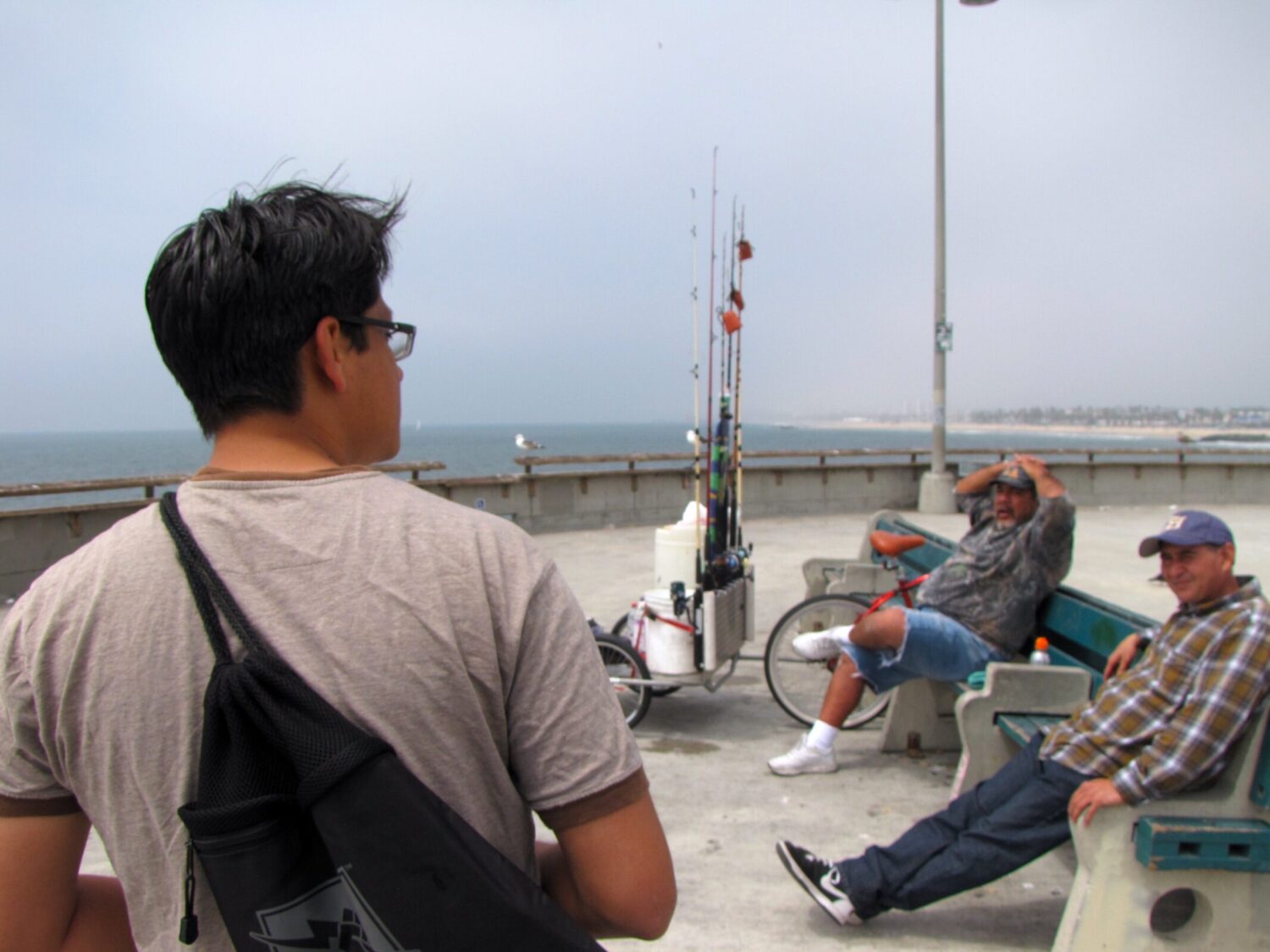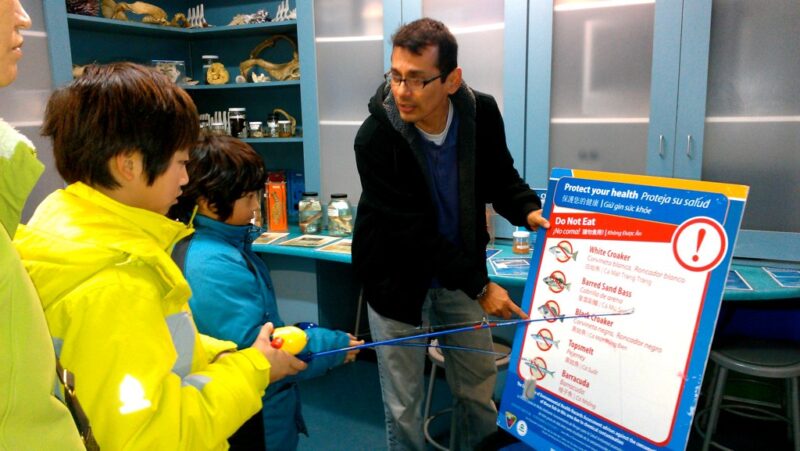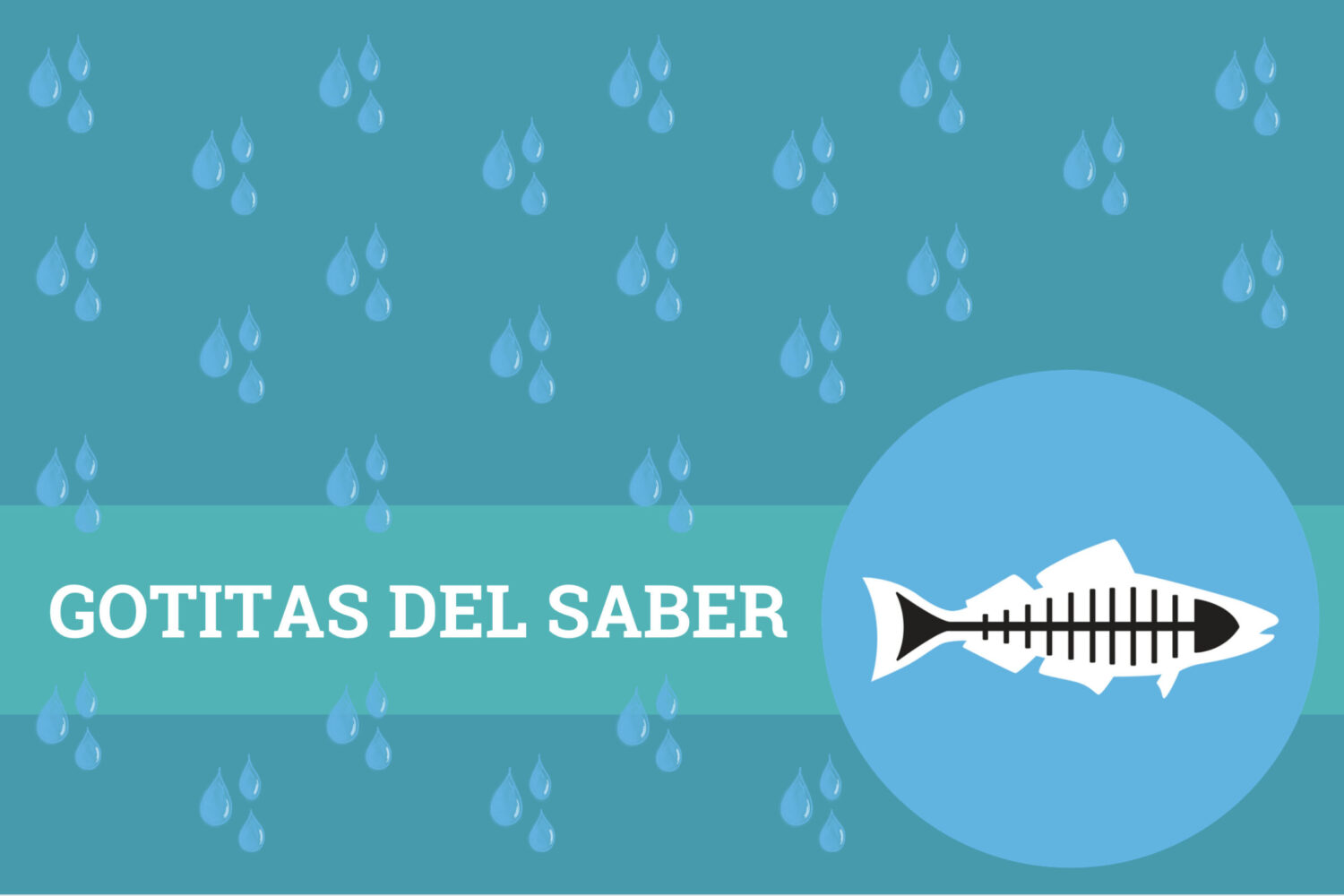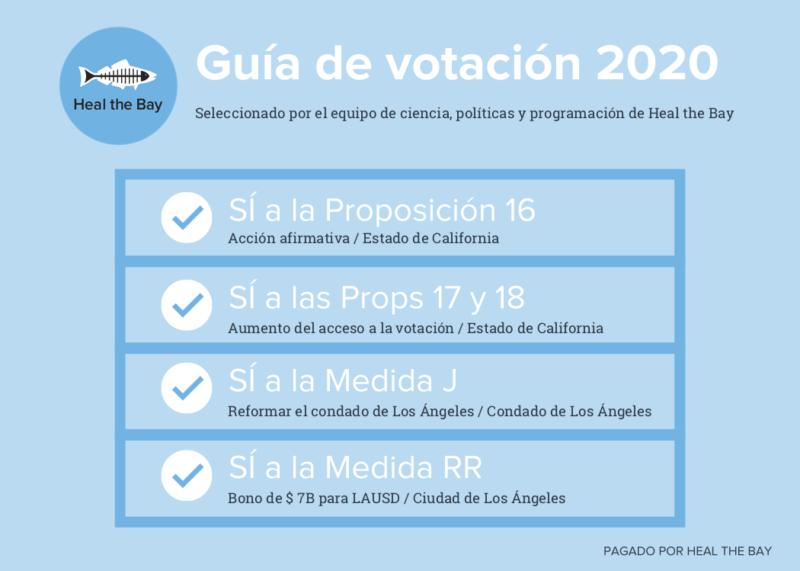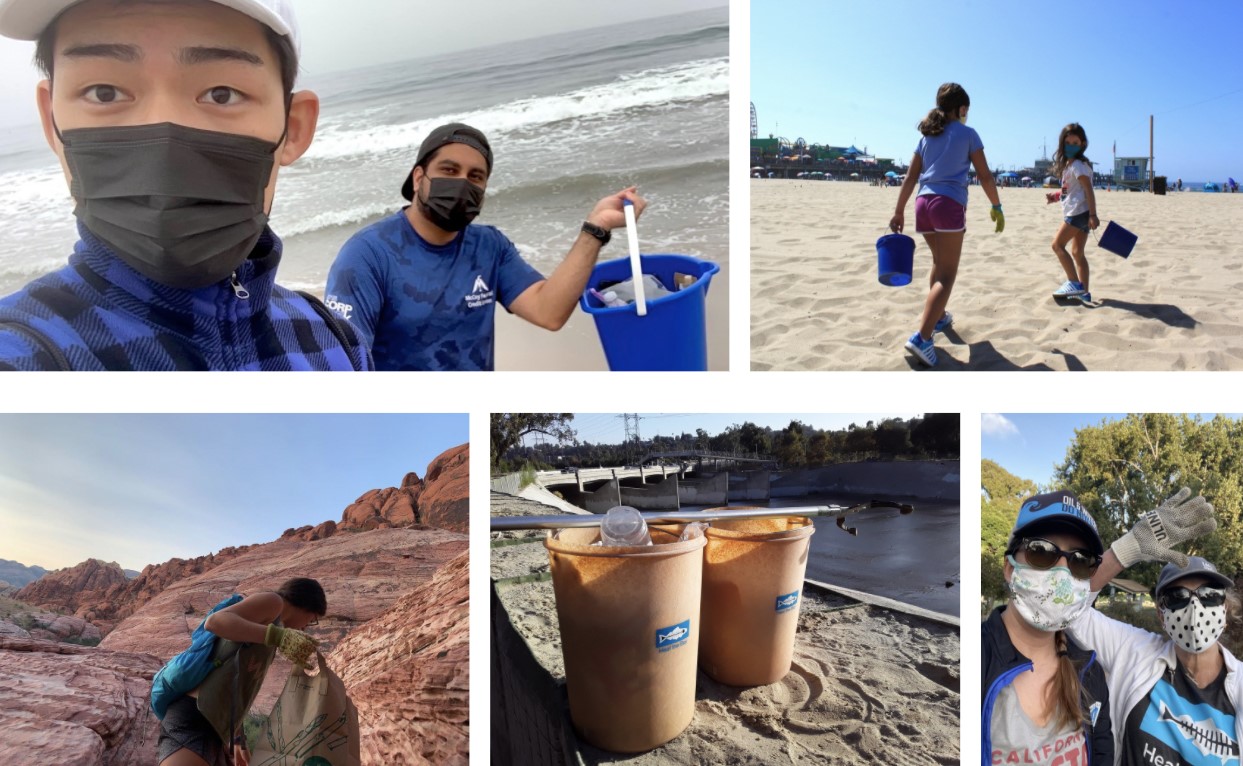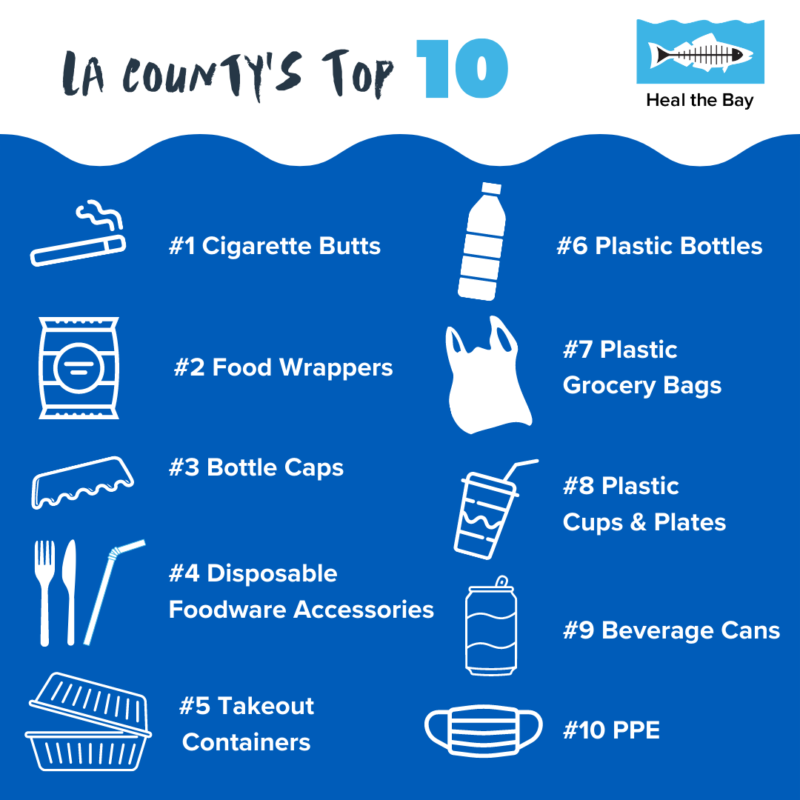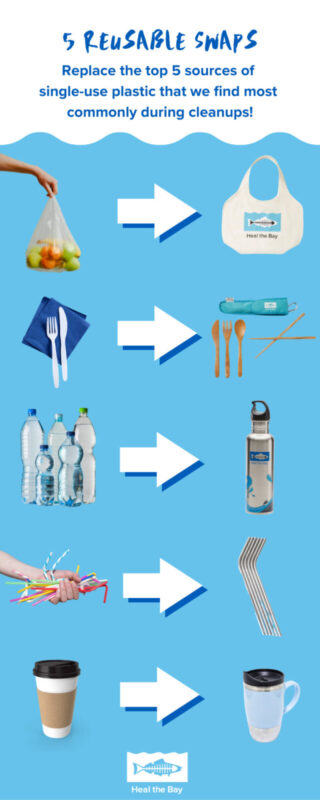UPDATE: Originally published on October 6, 2020. Last update on December 21, 2020 with the election results.

Download Graphics and Share Voter Guide 2020 Results
Yes on Prop 16: Affirmative Action / State of California
Notes: Failed
A success in Los Angeles County, but didn’t gain enough support from California voters to pass. The fight to allow people the option of considering equitable access to opportunity in the workforce of government agencies, contractors, and universities continues.
_____
Yes on Prop 17: Restored voting rights for felons / State of California
Notes: Passed
Finally possible for people who are on parole for felony convictions to vote. Voters also passed the potential for people who are on parole for felony convictions to run for office in California. People who have served their time deserve to participate in democracy.
_____
Yes on Prop 18: 17 year old people vote in primary / State of California
Notes: Failed
First introduced 16 years ago, would have allowed 17 year old people to vote in primary and special elections, if they turn 18 by the subsequent general election. This modest effort to expand voting rights and increase youth civic engagement failed. There are already 18 states and Washington D.C. where this is legal.
_____
Yes on Measure J Reimagine LA County / Los Angeles County
Notes: Passed
Investments in programs that respond directly to local needs is how we move toward healthier communities. Heal the Bay advocates for prioritizing equitable access to green jobs and a clean environment across Greater Los Angeles.
_____
Yes on Measure RR / $7B Bond for LAUSD / City of Los Angeles
Notes: Passed
All children in Los Angeles County deserve clean water, improved school safety standards, asbestos-free facilities, and classrooms equipped with technology for the 21st century. This funding for the Los Angeles Unified School District was deeply needed to protect students, families, teachers, and faculty.
[END OF UPDATE]
If you want to make waves, you have to get in the water. With voting season upon us, make use of these handy resources to create your ocean of change.
- Make sure you are registered to vote
- Dive into Heal the Bay’s Voting Guide (below)
- Find a California polling place near you
- Vote early!
Did you know California is one of a few states that allows “Conditional Voter Registration?“ This means you can register to vote conditionally all the way through Election Day on November 3. Contact the Los Angeles County Election Office for more information if you still need to register to vote. Early Voting takes place October 5 – November 2. If you are voting by mail-in ballot, the USPS recommends that you do so no later than October 27.
Heal the Bay’s mission—to make our coastal California waters and watersheds safe, healthy, and clean—is affected by issues of environmental justice.
We can only keep our rivers and oceans clean and accessible when we support and invest in all of our communities. That is why we are recommending yes votes on ballot initiatives that enact reforms that support communities most impacted by environmental injustices. Environmental justice is inextricably linked to social justice, and improving equity improves the health and environment across our communities.
Heal the Bay Voter Guide:
The Heal the Bay team created this brief voter guide for the November 3, 2020 election in Los Angeles County.

Yes on Prop 16: Affirmative Action / State of California
Yes on Props 17 & 18: Increasing Access to Voting / State of California
Yes on Measure J Reimagine LA County / Los Angeles County
Yes on Measure RR / $7B Bond for LAUSD / City of Los Angeles
_____
Proposition 16: A vote to allow the consideration of race, sex, color, ethnicity, or national origin to address diversity in public employment, contracting, and education.
The issue: This proposition repeals Prop 209, a ban on affirmative action in the California Constitution. This will allow for the consideration of diversity as a factor in public employment, public contracting, and public education decisions.
The stakes: Proposition 16 would diversify the composition of the workforce and the hiring pool available to government agencies, contractors, and university collaborators that work with Heal the Bay. As members of the environmental NGO community, we recognize the lack of diversity in leadership and staff within environmental organizations. Diverse perspectives provide a wider array of creative solutions to the environmental problems we face. With our commitment to advance environmental justice, Heal the Bay has taken strides to increase internal diversity, including updating our hiring policies. This proposition would help other agencies and universities to do the same in an effort to increase diversity at all levels.
Our recommendation: Cast your ballot to advance equity. Vote YES on Prop 16.
_____
Propositions 17 and 18: Votes to increase access to voting.
The issue: Proposition 17 would amend the Constitution of California to allow people who are on parole for felony convictions to vote. Proposition 18 would allow 17-year-olds to vote in primary and special elections, if they will turn 18 by the subsequent general election.
The stakes: The issues confronting our state, including climate change, the resulting intensity of wildfires, and the human right to clean water, affect everyone, and everyone should have a say in them. The felons who’ve served their time and are on parole, as well as our youth in California, have to live with our decisions and should be able to participate in making them.
Our recommendation: Cast your ballot to increase voting access. Vote YES on Props 17 and 18.
_____
Measure J (Los Angeles County): A vote to dismantle systemic racism by investing in health, housing, and jobs.
The issue: Los Angeles County spends vastly more money – 42% of all revenues – on law enforcement and the legal system, at the expense of other community needs including the environment. Measure J will permanently allocate at least 10% of the county’s unrestricted general funds to community counseling, mental health services, youth development programs, small businesses, job creation, career training, and affordable housing. These much-needed investments move us toward healthier communities and can support green jobs and a cleaner environment for low-income communities and communities of color in Los Angeles.
The stakes: Heal the Bay wrote a comment letter in June 2020 supporting the People’s Budget to increase investments in community health in Los Angeles. Measure J includes programs and values similar to those we advocated in Measure W two years ago: good jobs, career training opportunities, and equity.
Our recommendation: Cast your ballot for the health, housing, and jobs of the communities who need it most. Vote YES on Measure J.
_____
Measure RR (Los Angeles): A vote to upgrade LAUSD schools and increase school safety.
The issue: Heal the Bay believes deeply in the value of education. We must invest in our children and our future. LAUSD infrastructure requires upgrades to aging buildings that aren’t safe for students. This Measure would authorize $7,000,000,000 in bonds at legal rates to address real infrastructure issues at LAUSD schools. It would include independent audits and citizens’ oversight, with none of the money going to administrative salaries.
The stakes: Heal the Bay works with LAUSD schools regularly, and we have seen first hand through our Speakers Bureau program the inequities and lack of resources between different school districts. We believe that all children in LA County deserve clean water, improved safety standards, asbestos-free facilities, and classrooms equipped with technology for the 21st century.
Our recommendation: Cast your ballot for long-needed upgrades and safety measures in LAUSD schools. Vote YES on RR.
PAID FOR BY HEAL THE BAY








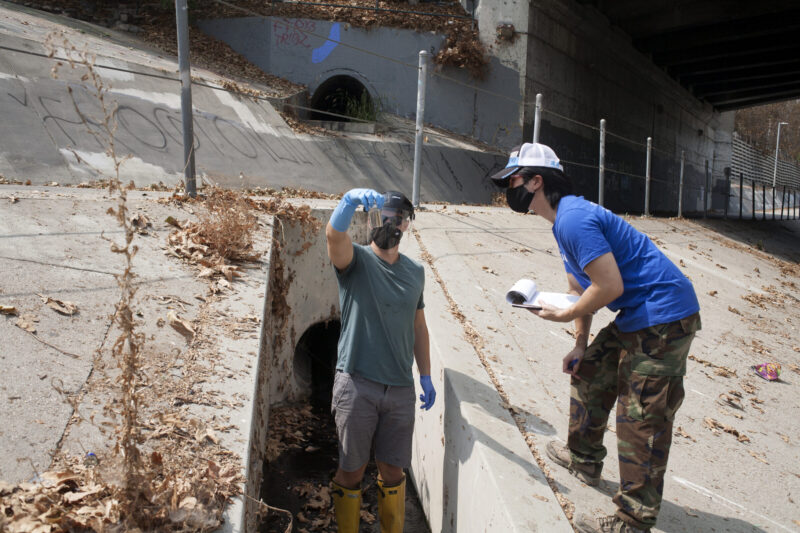
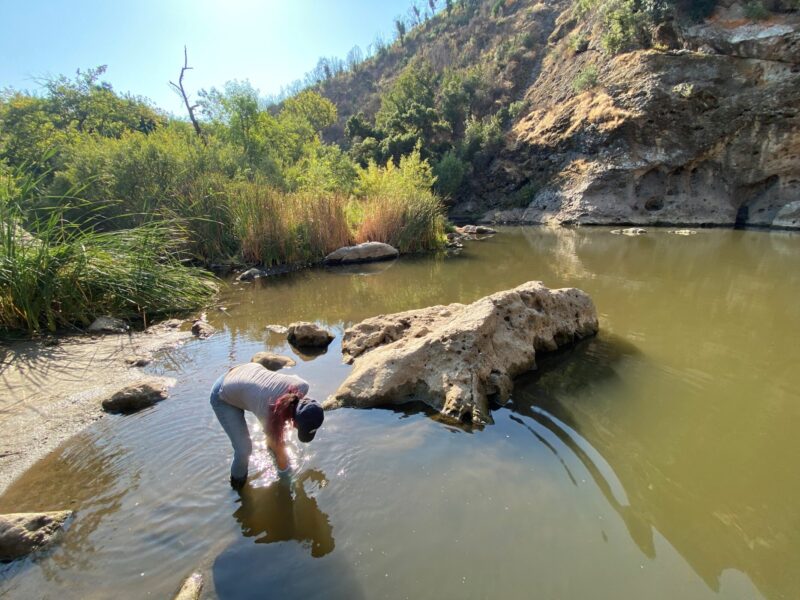 Monitoring efforts by
Monitoring efforts by 
